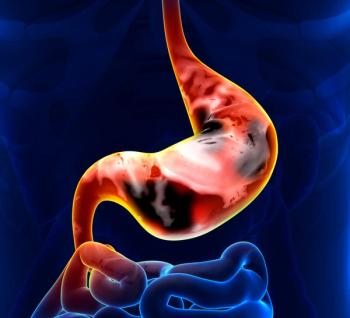
Prolonged Pre-Op Chemo Improved Survival in Pancreatic Cancer
Researchers at Kaiser Permanente were able to achieve complete histopathologic response in more than 40% of initially unresectable patients with pancreatic adenocarcinoma who underwent prolonged preoperative chemotherapy and were subsequently able to undergo surgical resection.
Researchers at Kaiser Permanente were able to achieve complete histopathologic response in more than 40% of initially unresectable patients with pancreatic adenocarcinoma who underwent prolonged preoperative chemotherapy and were subsequently able to undergo surgical resection.
“Our approach to patients with locally advanced/borderline resectable pancreatic ductal adenocarcinoma, which includes prolonged preoperative chemotherapy, is associated with a high incidence of lymph-node-negative disease and excellent overall survival,” wrote Brian E. Kadera, MD, of the David Geffen School of Medicine at University of California, and colleagues in JAMA Surgery.
Currently about 40% of patients with pancreas adenocarcinoma have locally advanced/borderline resectable disease. Recent advances in chemotherapy have led to the use of preoperative therapy with the goal of shrinking the tumor prior to surgery; however, no standardization of management has been set.
Kadera and colleagues conducted
The majority of patients in the study underwent preoperative therapy with gemcitabine or 5-FU based therapy. This therapy was associated with a decrease in median tumor size from 3.1 cm to 1.7 cm (P < .001). In addition, 15 patients had apparent resolution of vascular involvement after therapy.
After a median of 7.1 months of preoperative therapy, 75.5% of patients underwent pylorus-preserving Whipple operation; 3 patients underwent vascular resection. Surgery showed that 75.5% of patients were lymph-node negative and 85.7% had negative margins. Ultimately, 45.8% of patients had a complete pathologic response. As a result, median overall survival was 40.1 months.
Univariate analysis showed that perineural invasion, lymph node involvement, and histopathologic treatment response were all significantly associated with survival. Additionally, SMAD4 protein loss (P = .01) in tumor cells and microRNA-21 expression in the stroma (P = .05) were associated with overall survival.
In a
However, DiFronzo pointed out several issues with the study, including the fact that it did not discuss how many patients with pancreas adenocarcinoma were treated each year but did not demonstrate a response and consequently did not undergo resection, and how many patients assigned prolonged chemotherapy developed systemic disease prior to surgery.
“Although progress has been made in the treatment of pancreatic cancer, many questions remain,” DiFronzo concluded. “Future studies will need to address the issue of the optimal neoadjuvant chemotherapy regimen for pancreas cancer, in addition to the timing and duration of therapy.”
Newsletter
Stay up to date on recent advances in the multidisciplinary approach to cancer.

















































































